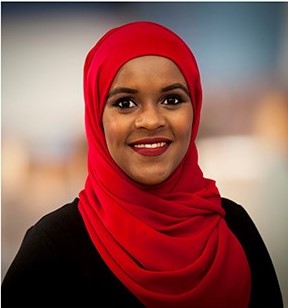Addressing Cultural and Religious Barriers to Water Safety

Anisa Ibrahim, MD, FAAP
July 12, 2019
As an attending physician in Seattle, I encourage the pediatric residents and medical students I supervise to talk with families about drowning prevention as part of anticipatory safety guidance. This includes sharing the American Academy of Pediatrics recommendation that all children learn to swim as early as age 1.
Drowning is a leading cause of injury-related death in U.S. children, a fact that’s even more sobering when we consider that over 40% of our Puget Sound lowlands city’s total area is comprised of water. Swim lessons are a life-saving skill, an important layer of protection against drowning that all children should have.
But the feedback my young colleagues get from families at our wonderfully diverse primary care clinic located inside the county hospital is, too often, discouraging. “I suggested that learning to swim is a great skill for children and families,” many report, “but the parents declined because of cultural reasons.”
A hijab wearing Muslim women myself, I often smile and ask about the possible cultural reasons a family might decline something like swimming lessons. Most often, learners are able to come around to comfort as a reason. Some hit the nail on the head, realizing that the attire most often required for swimming activities is not allowed by the religion or cultural norms practiced by the family.
As we’ve experienced and research confirms, many families from religions that require modest clothing report that their religious restrictions are a barrier to exercise. In Muslim communities, women are required to wear long, loose fitting clothing. However, when women are in environments where there will be only women present, it is permissible to show their hair and wear clothing that would be more conducive to exercise and swimming.
“The opportunity to swim in a gender exclusive environment was so popular that there was overcrowding, and the slots often sold out...I personally benefitted from attending these swim sessions, where I could remove my hijab, and wear leggings and a tank top, instead of stressing about finding attire that I would be comfortable in with both genders present.”
A modest proposal: gender-specific swim sessions
In 2006, a pilot project created women’s only swim sessions, complete with female lifeguards and window shades, at a local pool and community. The success of this pilot lead to a year-long expansion that led to several pools in the Seattle area having women’s swim hour once a week. The opportunity to swim in a gender exclusive environment was so popular that there was overcrowding, and the slots often sold out.
It was clear that the biggest barrier keeping families from learning to swim, whether for water safety or exercise, was the need for gender-exclusive opportunities when women and children could spend time in the water while still practicing their religious beliefs. I personally benefitted from attending these swim sessions, where I could remove my hijab, and wear leggings and a tank top, instead of stressing about finding attire that I would be comfortable in with both genders present.
In addition, I felt respected and valued in my community. I saw that the lack of Muslim women and children in community center pools had little to do with whether they found swimming to be an important skill and more to do with religious accommodation.
A question of comfort
This experience has changed the way that I initiate the conversation with families who have religious or cultural values around swim attire. First, just as I would with any family, I make sure to mention the importance of learning to swim and water safety. Then, regardless of their initial response, I inquire about their comfort with swimming pools and swim lessons. The approach to this inquiry varies but is usually along the lines of “How comfortable are you going to your local swimming pool?” or, “Is there anything that makes it hard for you to go to swimming lessons?”
Some families may be forthcoming, but yet again, there is a hierarchy in the patient-doctor relationship that might make religion a difficult topic to bring up. This is why it’s important to not only ask, but also offer information.
Relaying information about the availability of women-only swim lessons is important, but gender-specific programs may not be readily available. I focus on making sure parents know that they have the right to dress their children more modestly and still participate in swim lessons and sports. For example, it should be acceptable to wear long sleeved swim wear or leggings under shorts for certain sports. Due to accepted norms, families may not know that they can request these accommodations and often just opt out of having their children participate.
I also empower parents to initiate a conversation about having programs accommodate their religious values with regards to clothing in a way that is respectful and safe. This empowering is at times even more important than advocating on behalf of them, because it centers on the parents’ voice. It also shows that you, as a provider, are supportive of the family in a way that acknowledges and respects the fact that they are the first and best advocate for their child.
*The views expressed in this article are those of the author, and not necessarily those of the American Academy of Pediatrics.
About the Author
Anisa Ibrahim, MD, FAAP
Anisa Ibrahim, MD, FAAP, an Executive Committee member of the AAP’s Council on Community Pediatrics, is a Clinical Assistant Professor, University of Washington, Department of Pediatrics and an Attending Physician, Harborview Medical Center Pediatrics Clinic.